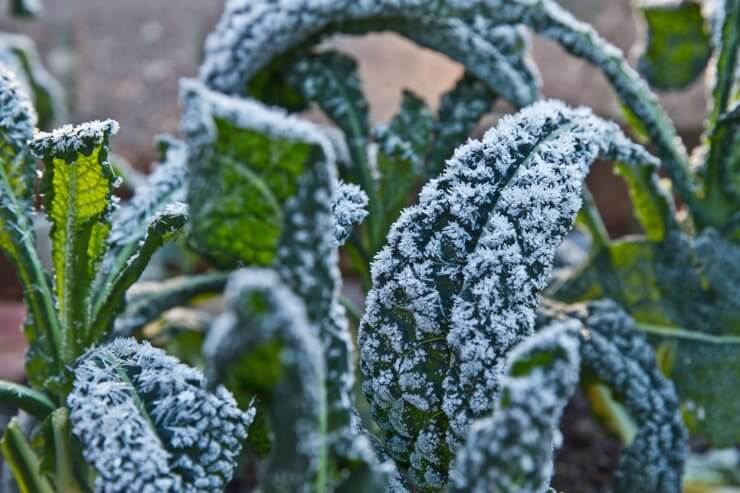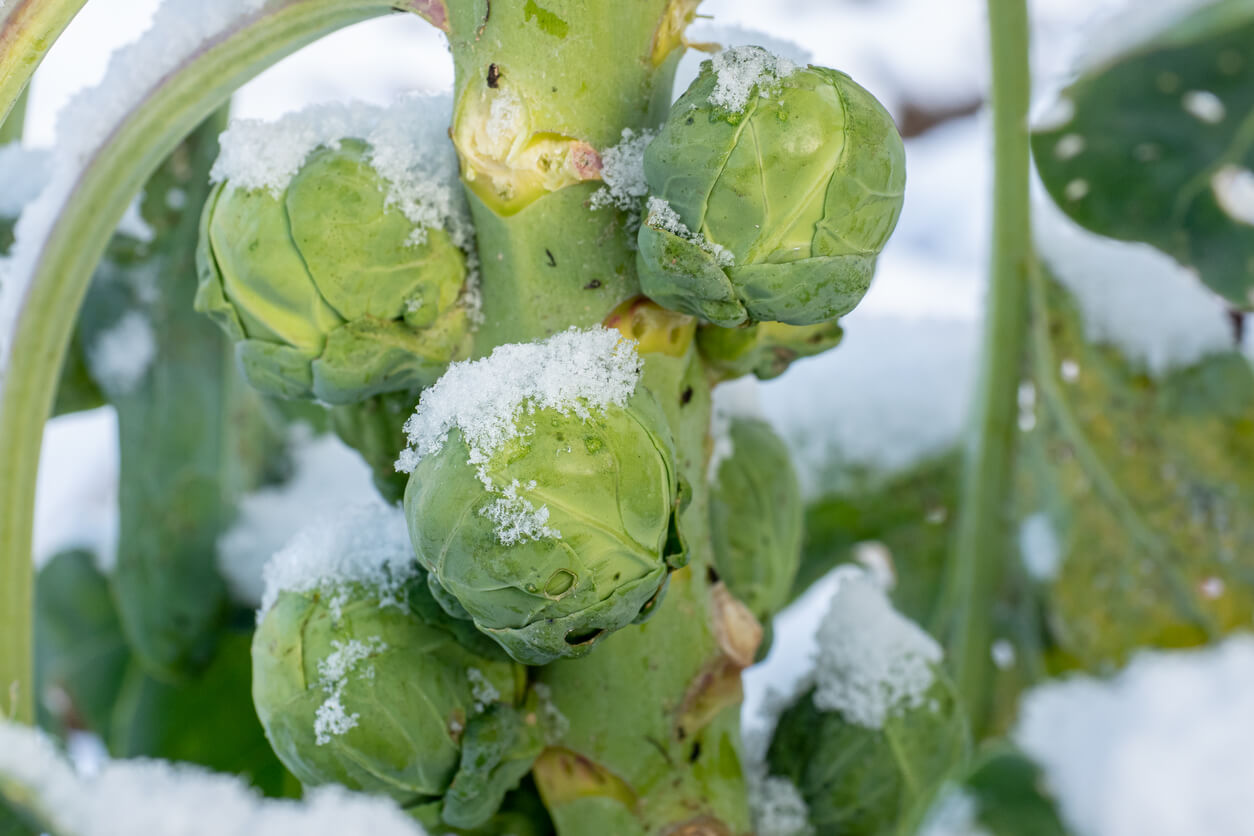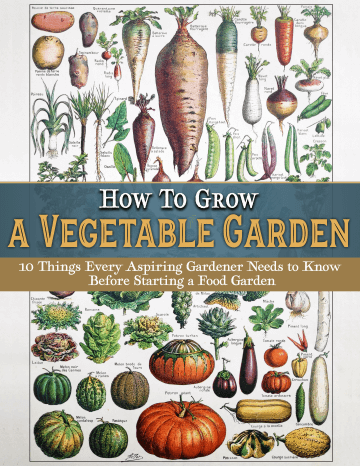
So, you want to garden in the winter? Okay! While you might not get those gorgeous eggplants or crunchy cucumbers, you can still keep your hands in the dirt, so to speak. Just be sure to pay attention to the do’s and don’ts of gardening in the winter months.
First, though, I have to share the caveat that winter means very different things depending on where you live. In this case, the do’s and don’ts of gardening in the winter are about areas with your typical four seasons of winter, spring, summer, and fall.
Yes, winter might be much colder in North Dakota than in North Carolina, but the basic concepts still apply. Feel free to translate these tips and use them as fits your personal situation. Now then, on to winter gardening!
Discover 10 top tips for growing, harvesting, and enjoying fruits, vegetables, herbs and more from your home garden—when you access the FREEBIE How to Grow a Vegetable Garden, right now!

The 15 do’s and don’ts of gardening when it’s dark and cold
1. Do adapt. There are four things that plants need in order to thrive: sunlight, warmth, nutrients, and water. Two of these–sunlight and warmth–are a bit hard to come by in winter. That makes adaptation the first of your do’s and don’ts of gardening in the winter. Stick with vegetables that can thrive in lower light and cooler temperatures.
2. Don’t expect too much. Outside of outfitting your basement or outbuilding with heaters, humidifiers, and grow lights, you likely aren’t going to get a big harvest of anything. Think of winter gardening more as supplemental.
3. Do use a greenhouse or cold frame. If you expect to harvest anything at all from an outdoor garden, you’ll almost certainly need to grow your plants in a greenhouse or cold frame.
4. Don’t wear out your soil. Your soil needs time to rest, and continual planting (with a greenhouse or cold frame) can keep your soil working, eliminating the rest period it needs to recover.
5. Do place any indoor plants near a south or east-facing window. While sunlight is limited in the winter, you want to give your indoor plants as much opportunity as they can to absorb that light.
6. Don’t ignore the environmental conditions near those windows. It’s true that you want your plants close to the windows so they can absorb light, but be aware of things like cold drafts or placement over a heating vent that can dry out the soil quickly.
7. Do continue watering fruit trees and perennials until the ground freezes. Since the ground will be frozen and dry for the next few months, it’s helpful to ensure your plants have plenty of water.
8. Don’t prune your fruit trees too early. For most young fruit trees, a late winter or early spring pruning will encourage growth and production.
9. Do clean your garden. Early winter is the time to clean and store your garden tools, list any repairs or updates you may want to make, and cut back your brambles.
10. Don’t go overboard with cleaning. All those leaves and plant debris make great overwintering spots for butterflies and other pollinators. Plus, as they decay, they add nutrients to the soil.
11. Do order seeds. Admittedly, this is one of my favorite “do’s” of the do’s and don’ts of gardening in the winter. In my opinion, there’s not much better than dreaming of my garden and ordering seeds for new varieties of fruits and vegetables.
12. Don’t go overboard. There are only so many plants that can fit in your garden. Trust me on this one.
13. Do start your seeds. Depending on your location and climate and the particular plant, you might be able to start some of your seeds as early as February.
14. Do feed the birds. They eat harmful pests, help pollinate, and treat us to beautiful songs every morning. Setting up a bird feeder or two is the least we can do to keep our feathered friends happy and healthy over the winter months. Here’s a simple and inexpensive bird feeder that I like.
15. Do attend gardening classes. With so many possibilities on Zoom, why not sign up for a gardening class or lecture? Your local library, botanical garden, or horticultural society may offer some, but don’t limit your search to local. Remember, with online lectures, you can attend from just about anywhere!
Do you have any tips you would add to this for gardening in the winter? I’d love to read them in the comments.
Note: Food Gardening Network contains links to affiliate websites, including Amazon and Rakuten Affiliate Network, and we may receive a commission for any eligible purchases made by you through links on this page. Any reviews are based on honest reviews of the products.
Discover 10 top tips for growing, harvesting, and enjoying fruits, vegetables, herbs and more from your home garden—when you access the FREEBIE How to Grow a Vegetable Garden, right now!




